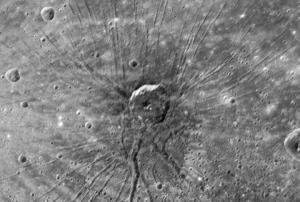 MESSENGER is a spacecraft which recently made a flyby near Mercury and it gave scientists a whole new perspective over the planet. Researchers are amazed by the wealth of images and data which show a surprising diversity of geological processes which took and are still taking place and a very different magnetosphere from the one discovered and sampled more than 30 years ago.
MESSENGER is a spacecraft which recently made a flyby near Mercury and it gave scientists a whole new perspective over the planet. Researchers are amazed by the wealth of images and data which show a surprising diversity of geological processes which took and are still taking place and a very different magnetosphere from the one discovered and sampled more than 30 years ago.
In case you’re wondering, MESSENGER is written this way because it is in fact a sort of acronym which comes from NASA’s MErcury Surface, Space ENvironment, GEochemistry, and Ranging. After a journey of over 2 billion miles and three and a half years, it made it’s first orbit around the planet which is closest to the Sun. The cameras and overall very sophisticated gear collected more than 1200 images and made many other fascinating discoveries.
“This flyby allowed us to see a part of the planet never before viewed by spacecraft, and our little craft has returned a gold mine of exciting data,” said Sean Solomon, MESSENGER’s principal investigator, Carnegie Institution of Washington. “From the perspectives of spacecraft performance and maneuver accuracy, this encounter was near-perfect, and we are delighted that all of the science data are now on the ground.”
Another interesting thing is the fact that Mercury has huge cliffs with structures snaking up hundreds of miles across the planet’s face and the craters are very different than the ones you could find on the moon, for example. But probably the most interesting thing found is a geological trait that scientists have nicknamed “The Spider.”. It has never been observed before and nothing close to it could be found on the moon. It lies in the middle of a large impact crater called the Caloris basin and consists of more than one hundred narrow, flat-floored troughs radiating from a complex central region.
“The Spider has a crater near its center, but whether that crater is related to the original formation or came later is not clear at this time,” said James Head, science team co-investigator at Brown University, Providence, R.I.
The characteristics of the magnetic field have also changed from the time that Mariner made its 10 observations.
“We should keep this treasure trove of data in perspective. With two flybys to come and an intensive orbital mission to follow, we are just getting started to go where no one has been before,” said project scientist Ralph McNutt of the Applied Physics Laboratory, Laurel, Md.






